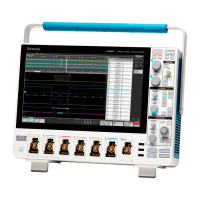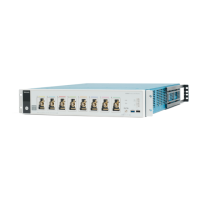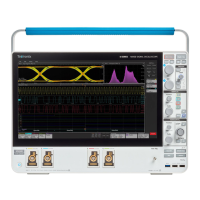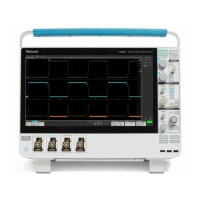Advanced triggering
Y
ou can check the advanced trigger status in the settings bar. The readout indicates the trigger type and then shows sources, levels, or
any other parameters that are important for the particular trigger type.
Bus triggering concepts
A bus trigger occurs when a supported instrument detects a bus pattern that you specify for a parallel bus, or a bus cycle you select for a
serial bus.
Y
ou can set the instrument to trigger on a parallel bus when the instrument detects a match to the bus pattern, or when the instrument
detects that the value on the bus is < or > the value of the bus pattern. The pattern can be in Binary or Hex format.
You can set the instrument to trigger on an SPI bus when the instrument detects an SS Active bus cycle or Data.
You can set the instrument to trigger on an I2C bus when the instrument detects a Start, Stop, Repeated Start, Missing Ack, Address,
Data, or Addr + Data bus cycle or activity.
You can set the instrument to trigger on an RS232 bus when the instrument detects a Start, End of Packet, Data, or Parity Error bus cycle
or activity.
You can set the instrument to trigger on an CAN bus when the instrument detects a Start of Frame, Type of Frame, Identifier, Data, Id and
Data, End of Frame, Missing Acq, or Bit Stuffing Error bus cycle or activity.
You can set the instrument to trigger on an LIN bus when the instrument detects a Sync, Identifier, Data, Identifier & Data, Wakeup Frame,
Sleep Frame, or Error bus cycle or activity.
For all the serial standard buses, you can also set the component threshold levels through the Bus Setup menu.
Pulse width trigger concepts
A pulse width trigger occurs when the instrument detects a pulse that is inside or outside some specified time range. The instrument can
trigger on positive or negative width pulses.
Timeout trigger concepts
A timeout trigger occurs when the instrument does not detect an expected pulse transition within a user specified period of time, such as
when a signal gets stuck either high or low. If the pulse transition occurs prior to a specified timeout time (the expected case), then no
trigger results.
Runt trigger concepts
A runt trigger occurs when the instrument detects a short pulse that crosses one threshold but fails to cross a second threshold before
recrossing the first. You can set the instrument to detect any positive or negative runts, or those that are inside or outside a specified time
range.
Triggering concepts
240
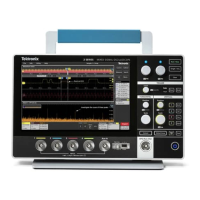
